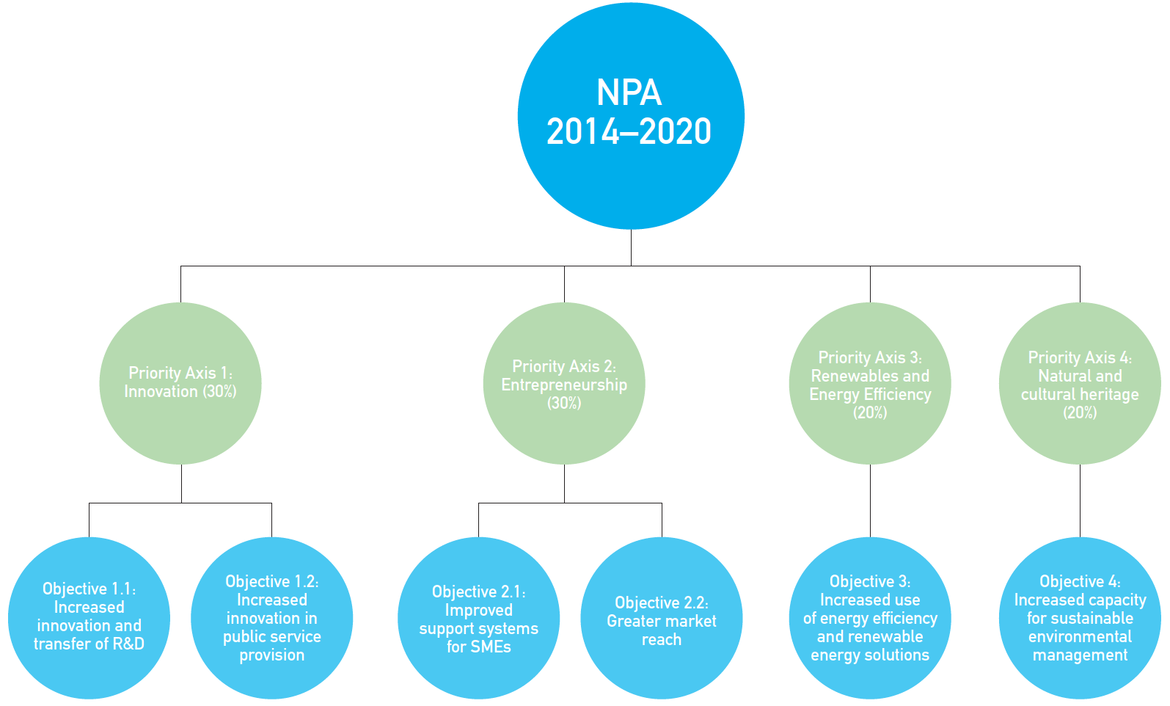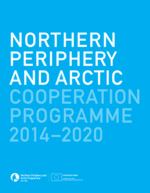Priority Axes
It is the programme’s vision is to help to generate vibrant, competitive and sustainable communities through transnational cooperation.
Four Priority Axes have been developed to achieve the programme vision:
| 1. | Using Innovation to Maintain And Develop Robust And Competitive Communities |
| 2. | Promoting Entrepreneurship to Realise the Potential of the Programme Area’s Competitive Advantage |
| 3. | Fostering Energy-Secure Communities through Promotion of Renewable Energy and Energy Efficiency |
| 4. | Protecting, Promoting and Developing Cultural and Natural Heritage |
Applicants are free to develop their own ideas, as long as they address one of the priority axes and inside this, one specific objective of the Programme.
The 4 priority axes contain 6 specific objectives. For each specific objective, the Programme has provided an indicative list of project examples, examples of target groups, and project partners. You can find these descriptions in Chapter 1 of the Programme Manual.
| Priority Axis | Specific Objective |
|---|---|
| 1 Innovation | 1.1 Increased innovation and transfer of new technology to SMEs in remote, sparsely populated areas |
| 1.2 Increased innovation within public service provision in remote, sparsely populated areas | |
| 2 Entrepreneurship | 2.1 Improved support systems tailored for start-ups and existing SMEs in remote and sparsely populated areas |
| 2.2 Greater market reach beyond local markets for SMEs in remote and sparsely populated areas | |
| 3 Renewables and energy efficiency | 3 Increased use of energy efficiency and renewable energy solutions in housing and public infrastructures in remote, sparsely populated areas |
| 4 Protecting, developing and promoting natural and cultural heritage | 4 Increased capacity of remote and sparsely populated communities for sustainable environmental management |
To assist with project development, the Programme has defined for each priority axis the Programme result sought, which is the change the Programme wishes to contribute to in the Programme area. Detailed descriptions can be found in chapter 1 of the Programme Manual.
To measure progress towards the result sought, the Programme has defined a set of result indicators on Programme level, and a set of output indicators to measure the tangible outputs produced by the projects funded by the Programme, primarily products and services.
In order to ensure that products and services contribute to the change the Programme seeks, they need to meet a certain quality standard. For this reason, the Programme has defined a set of quality objectives. These quality objectives form the basis for project selection and project monitoring criteria outlined in chapter 2 of the Programme Manual.



